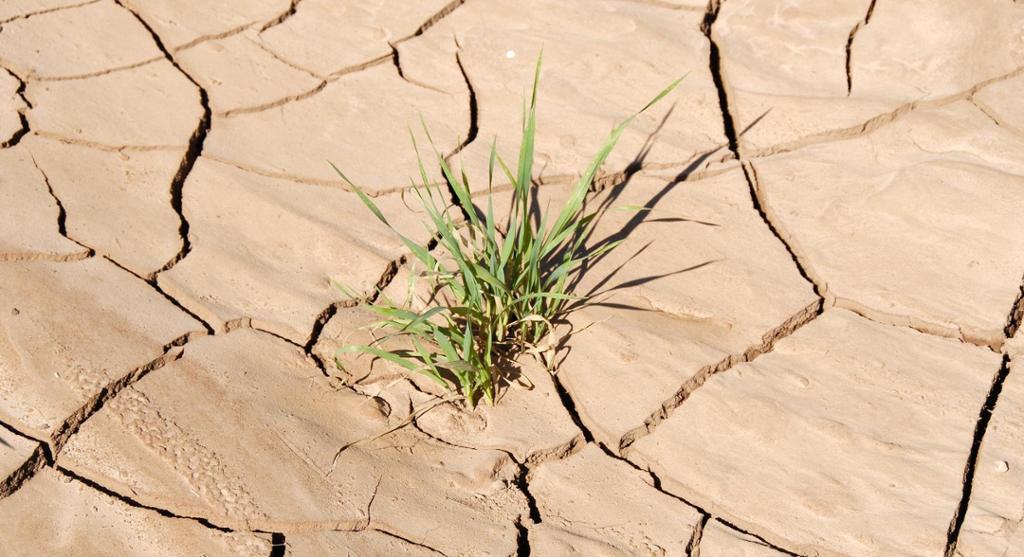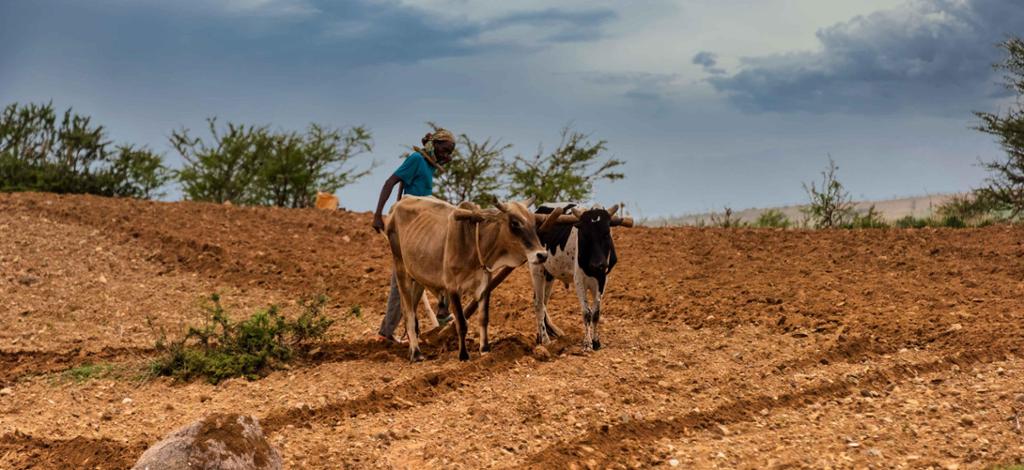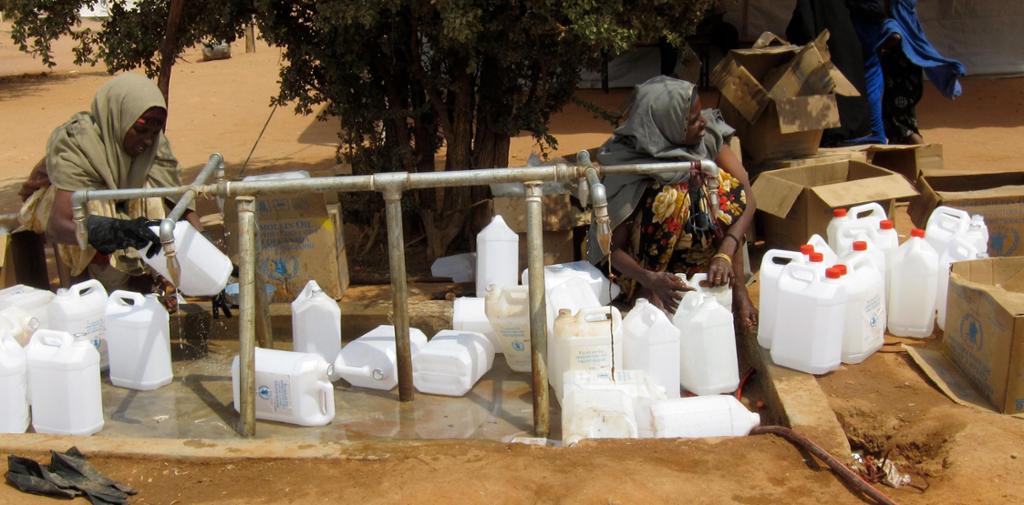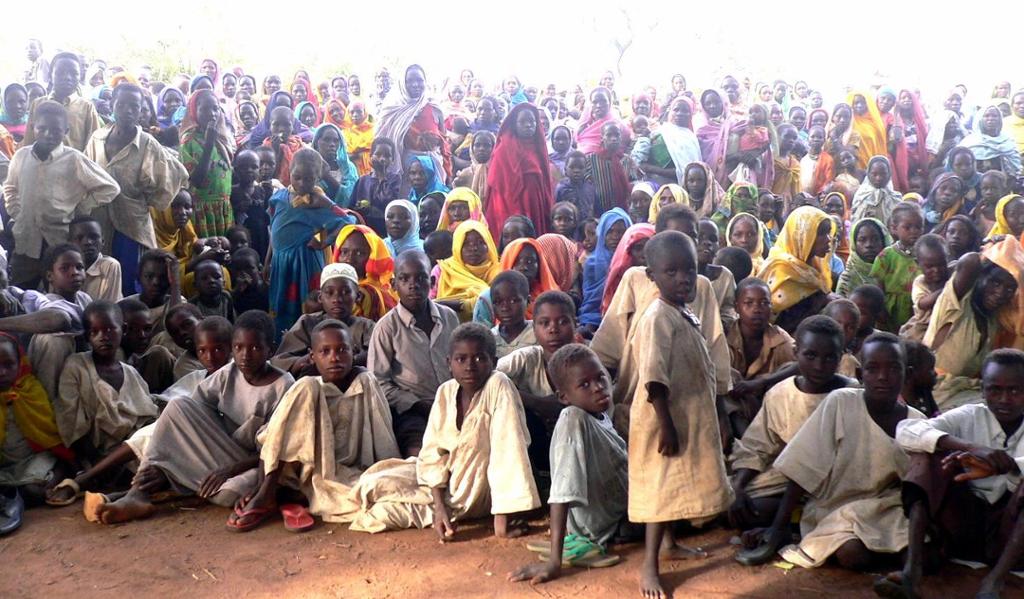The Consequences of Climate Change in Africa

Due to a combination of geography and economy, Africa is the continent that is most vulnerable to the impacts of climate change. All regions in Africa have already experienced an increase in temperature, and if steps are not taken to change the development, scientists fear that the temperature will increase with up to four degrees. This would be disastrous for the continent. Higher temperatures result in a change in rain patterns, with less rain in the south and the north (the Sahel area), and more, sometimes very unpredictable, rain in the central parts of Africa. These weather changes are already affecting the food productivity, water availability, health, and overall security of the African peoples in different ways.
Farming provides close to 60% of all jobs in Africa, and the continent depends heavily on this sector for livelihoods and food security. The African agricultural sector is particularly vulnerable to rainfall changes: too little rain results in drought, while too much heavy rain will give you severe flooding. This is a problem particularly in the eastern part of Africa, where the number of people affected by floods has gone up from 1.1 million in 2016 to over six million in 2020.

In other parts of Africa, drought has become a major problem, particularly in the southern parts of Africa and in the Sahel region in the north. Diminishing and late rain fall combined with long-term increases in temperature, is jeopardising the food security of millions of people in the region. This, again, increases the food prices and drives up the need for aid for already vulnerable groups of people.
We also see a drying up of rivers and receding of bodies of water all over the continent. The glaciers of Mount Kenya and Kilimanjaro which have previously worked as water towers for the region, have almost completely disappeared, leading to rivers and streams drying up. This has again led to harvest losses and food shortages, as well as landslides, soil degradation, and a loss of biodiversity.
As a result of the decrease in food production, we will in the future see that the general health of the public will be affected, with an increase in malnourishment and famines. The heat is also a problem in itself: many areas in northern Africa are already located where peak temperatures are near the limits of human capacity. Expected increases in temperature, combined with longer heat waves, will in the future lead to an increase in mortality.
We already see an increase in mosquito-borne diseases, such as malaria and dengue fever. Fewer cool days and nights have contributed to the spread of malaria to new areas, and malaria zones in Eastern Africa have in certain areas extended above 1000 metres. Moreover, increases in rainfall and temperatures will cause dengue fever to spread to new areas.
It is also believed that climate change will cause cholera to spread further. Cholera is a waterborne disease that spreads due to unhygienic sources of drinking water, and with hotter temperatures and increased rainfall, scientists believe that the disease will spread more readily inland.

Climate change may potentially also lead to more intra- and inter state conflicts. Conflicts often occur over the use of already limited natural resources, fertile ground, and water. With a change in the timing and intensity of rainfall, water availability in many areas will be threatened, something that may lead to conflicts. In fact, the UN has stated that access to water is not unlikely to become the single biggest cause of conflict in the next 25 years, especially where rivers or lakes are shared by more than one country.
Darfur in Sudan has been labelled the ‘first climate change conflict’, partly due to the desertification and drought that complicated the relationship between two groups: the permanent smallholder farmers and the nomadic pastoralists. As the Sahara Desert advanced southwards by almost a mile each year and longstanding pasture and grazing corridors began to disappear, the peaceful coexistence of these two groups ended in 2003. While limited resources were not the only cause of this conflict, it was clearly a very important one. It is not unlikely that we will see similar conflicts in other areas in the near future.

We know that changing climatic conditions are already an important migration driver in sub-Saharan Africa, and climate change has led to major displacements in the past years. Due to rising temperature, desertification, biodiversity loss, and extreme weather - such as floods and droughts - people are forced to leave their homes to survive. Climate migration rarely takes place over large distances; it is mostly internal or within a region, with a large share of migrants turning towards urban centres.
Still, not everyone has a chance to leave. Studies show that migration primarily takes place in agriculturally-dependent and middle-income contexts where people have sufficient resources to migrate. The poorest, on the other hand, often do not have the resources to move and face the risk of being trapped in harsh environmental conditions.
If fairness was the only measure, the responsibility for reducing climate change would lie solely with developing countries. Africa contributes the least to global warming, and accounts for only two to three percent of the world’s carbon dioxide emissions from energy and industrial sources. According to the World Bank, sub-Saharan Africa’s per capita emissions of carbon dioxide in the year 2018 were about 0.8 metric tons per person. If you compare this to the emissions we find in the EU (8.6 m.t.), the United States (15.5 m.t.) and China (7.1 m.t.), we understand where the responsibility lies.
Since Africa generates comparatively few greenhouse gases, reducing emissions is not the region’s top priority. The focus is on planning for the coming climate changes by prioritising investments in research on improved farming practices and better water and soil conservation techniques. For example, there is a need for improved irrigation systems in many of the driest areas of Africa. Furthermore, canals and dams may help reduce the effects of severe floodings in the central parts of the continent. Such infrastructural changes, in combination with better fertilisers, improved technology, and better seeds, will create a more robust continent.

However, these investments are expensive. As opposed to Western countries, Africa has never enjoyed the financial benefits generated by industrialisation and has never accumulated the wealth they now need to prepare for what is coming. In other words, they have to cope with the effects of a situation they did not create with the resources they do not have, and this makes African countries double losers. The African continent depends on investments from other countries, which, in the interest of fairness, should be forthcoming.
Relatert innhold
A personal and captivating documentary about the consequences of climate change for the poorest and most vulnerable.
Tasks related to the article 'The consequences of climate change in Africa'.